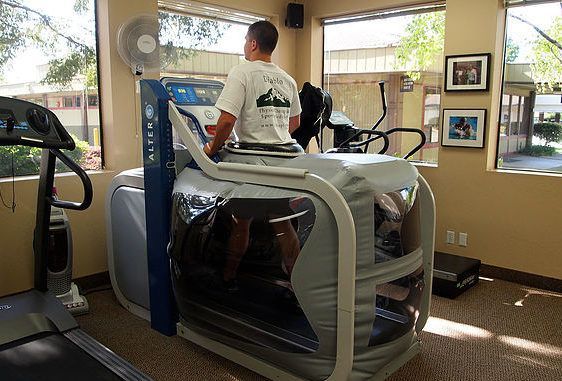Physical Therapy Month – A Safe Alternative to Opioids
You probably know that October is National Breast Cancer Awareness Month, but did you know that October is also National Physical Therapy Month? Both campaigns have important messages to share. In our case, National Physical Therapy Month is all about raising the awareness of physical therapy as a safe and effective alternative to opioids for treating chronic pain conditions.
This is important for two reasons:
- America is facing an epidemic of opioid misuse and abuse. According to the National Institute on Drug Abuse, more than 115 people die every day in America from an overdose of opioids. More than 1,000 people per day are treated for misusing them. Think it can’t possibly happen to you? Between 21 to 29 percent of patients prescribed opioids for chronic pain misuse them. That’s nearly one third! These drugs are highly addictive. This is a huge national health crisis that came about when pharmaceutical companies marketed opioids as safe and non-addictive. We know better now, but opioids are still being prescribed for chronic pain at an alarming rate. The Centers for Disease Control (CDC) says that in 2016, health care providers wrote 214 million prescriptions for opioid pain medication.
- If you’re in pain, you want pain relief, right? If the pain is bad enough, you may even want a quick fix in the form of a pill. Anything to make the pain go away. I get it, but there’s a better way. Physical therapy is much safer than prescription opioid pain relievers, and it’s both non-invasive and effective at treating pain. Physical therapists work to discover and treat the cause of your pain while opioids merely mask it. In fact, the CDC recommends physical therapy as a safer alternative to pain than doctor-prescribed opioids.
Let’s talk about side effects. The major side effects of opioids include: addiction, withdrawal, overdose, death, depression, and family/work problems related to addiction. The side effects of physical therapy include: decreased pain, improved mobility and balance, and prevention of other health problems.
Physical Therapy for Chronic Pain Conditions
Chronic conditions such as fibromyalgia, low back pain, and hip and knee osteoarthritis can all be managed via physical therapy. Here’s a quick look at each:
- Fibromyalgia — Nearly 5 million people in the United States suffer from this condition, with 80-90 percent of them being women. There’s no cure, but fibromyalgia-related pain, mobility, and range of motion issues can be managed via physical therapy. Opioids will only mask the pain and put you at risk of addiction.
- Low back pain — Consistently, about 25 percent of people in the US have suffered from low back pain in the last three months, and about 61 percent of back pain patients receive prescription opioids for their pain. Meanwhile, opioids are largely ineffective at treating low back pain. Physical therapy can help to reduce the pain as well as improve or restore mobility.
- Hip and knee osteoarthritis — These conditions are painful and may require a complete joint replacement surgery. In some cases, carefully supervised prescription opioids may be appropriate, but they bring the risks we’ve discussed earlier. Physical therapy is crucial in treating these conditions before and after surgery. Your treatment program will be personalized to address your specific condition and goals.
If you’re suffering from a chronic condition that causes pain, I hope you’ll join me in celebrating National Physical Therapy Month. Pain management is evolving. Let’s work together to better manage your condition and alleviate its pain through physical therapy. Call Diablo Physical Therapy and Sports Medicine to schedule an evaluation.
About the Author
Dara Richman
Dara Richman specializes in Orthopedics and Sports Medicine here at Diablo PT. As an avid athlete herself, she understands the desire to stay in peak performance. When she’s not working with patients, you’ll likely find her racing mountain bikes. Request a session with Dara by contacting our Danville location for an appointment.
About the Author
John Barman
John Barman is a co-founder of Diablo Physical Therapy and specializes in orthopedic and sports-related injuries, with an emphasis on biomechanics. As a long distance runner, cyclist, and seasoned physical therapist John understands the rigors of these sports on the body. Request a session with John by contacting our Menlo Park location for an appointment.





